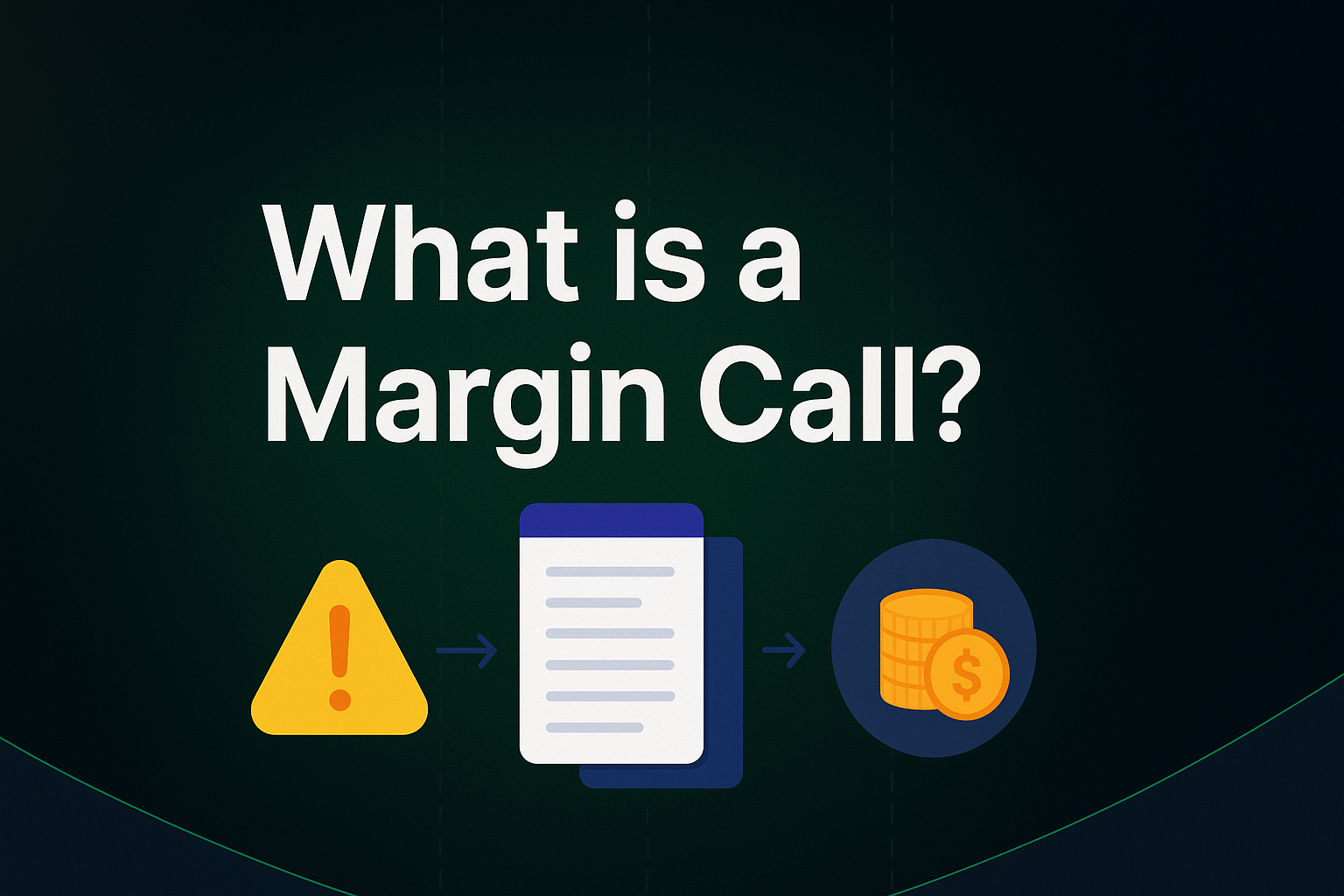

 25 Aug, 2025
25 Aug, 2025
 5 mins read
5 mins read

When traders borrow funds from their broker to increase their buying power, they enter the world of margin trading. While this can amplify profits, it also comes with the risk of receiving a margin call—a term that often causes anxiety among investors. But what does it actually mean, and how does it work in practice? Let’s break it down step by step.
A margin call occurs when the equity in a trader’s account falls below the broker’s required maintenance level. In simple terms, it’s the broker asking you to deposit more money or sell some holdings to restore your account balance.
Imagine you’ve purchased stocks worth ₹1,00,000, but only contributed ₹40,000 of your own capital while borrowing the rest from your broker. If the value of those shares falls significantly, your equity decreases, and your broker may step in with a margin call.
In short, it’s a safeguard for brokers to ensure they’re not exposed to excessive risk.
There are several reasons why a trader might receive one:
Falling asset prices – If the securities bought on borrowed funds lose value, equity shrinks.
High leverage – Borrowing a large portion relative to your own capital increases the likelihood of triggering a call.
Market volatility – Sudden swings can push account equity below required levels quickly.
Unrealized losses – When losses accumulate without being settled, margin requirements may no longer be met.
Essentially, a margin call signals that your account no longer has enough collateral to cover potential losses.
Brokers use a straightforward calculation to determine when a call is necessary. The margin call formula is:
Equity = Value of Securities − Loan Amount
A margin call occurs when:
Equity < Maintenance Margin Requirement
For example, suppose you buy shares worth ₹1,00,000 with ₹50,000 of your own funds and ₹50,000 borrowed. If the broker’s maintenance margin requirement is 30%, your equity should not fall below ₹30,000. If the stock value drops to ₹70,000, your equity becomes ₹20,000—triggering a margin call.
Here’s what actually happens when a margin call is triggered:
Broker Notification – You receive an alert, either by email, SMS, trading platform notification, or through your broker’s margin call online system.
Assessment Period – Brokers usually give a short timeframe, sometimes just a day, to meet the requirement.
Action Required – You can either deposit additional funds, transfer securities, or reduce positions by selling assets.
Failure to Act – If you don’t respond in time, the broker can liquidate your holdings to recover the shortfall.
Account Rebalancing – Once adjustments are made, your account equity is brought back in line with the required margin.
This sequence ensures both you and the broker are protected against unchecked losses.
When traders fail to meet the requirements of a call, brokers often resort to margin call selling. This means forcibly selling a portion—or sometimes all—of the securities in your account to recover borrowed funds.
The process is usually automated. For example, if you ignore a call, the broker’s system can initiate trades at market price to restore the balance. While this prevents further losses for the broker, it can lock in heavy losses for the trader.
Let’s assume you purchase 200 shares of a company at ₹500 each, totaling ₹1,00,000. You fund ₹40,000 yourself and borrow ₹60,000 from your broker.
Maintenance margin requirement: 25%
Market value falls to ₹70,000
Your equity = ₹70,000 – ₹60,000 = ₹10,000
Required equity = 25% of ₹70,000 = ₹17,500
Since your equity (₹10,000) is below the required ₹17,500, your broker issues a margin call. To fix it, you can either:
Add ₹7,500 to restore balance, or
If no action is taken, the broker may liquidate shares worth at least ₹30,000 to bring your account back above the threshold.
No trader likes to face one, but there are ways to reduce the chances:
Use conservative leverage – Borrow less than the maximum allowed to keep a safety buffer.
Set stop-loss orders – Automatically limit potential losses before they spiral.
Monitor positions closely – Regularly check your account to avoid surprises.
Keep extra funds ready – Maintain some cash reserves to meet sudden requirements.
Diversify holdings – Spread investments to reduce exposure to a single asset’s movement.
Prudent risk management is the best defence against forced liquidations.
While margin trading can boost returns, it’s important to weigh the advantages and risks:
Increases buying power without needing full capital upfront
Offers the potential for higher profits during favorable moves
Amplifies losses just as much as gains
Can lead to margin calls and forced selling
Requires active monitoring and strong discipline
In essence, margin trading should only be undertaken by those who understand the risks and can manage them effectively.
A margin call is not just a technical concept—it’s a practical reality that can reshape a trader’s financial position in minutes. Understanding how it works, from the formula to the actual step-by-step process, is crucial for anyone using leverage.
Handled wisely, margin trading can be a useful tool. Managed carelessly, it can wipe out capital quickly. By learning how margin calls work and how to prevent them, investors can navigate the risks of leverage with greater confidence.
It’s a broker’s request for you to add funds or sell assets when your account value falls below the required level.
If you don’t meet a call, the broker sells some of your holdings automatically to cover the shortfall.
A call is triggered when account equity (value of securities minus loan) falls below the broker’s maintenance margin requirement.
Yes, most brokers issue calls digitally via email, app notifications, or trading dashboards.
Calculate your Net P&L after deducting all the charges like Tax, Brokerage, etc.
Find your required margin.
Calculate the average price you paid for a stock and determine your total cost.
Estimate your investment growth. Calculate potential returns on one-time investments.
Forecast your investment returns. Understand potential growth with regular contributions.